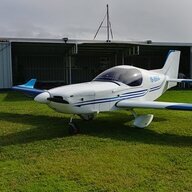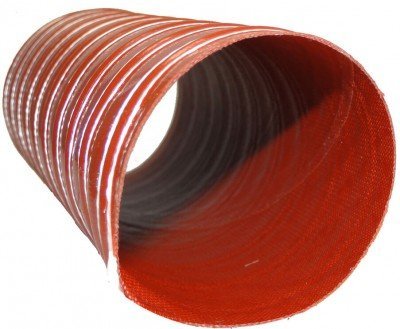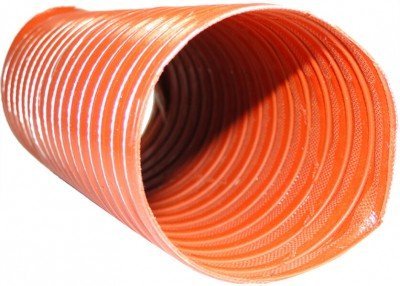-
Posts
4,793 -
Joined
-
Last visited
-
Days Won
139
Content Type
Profiles
Forums
Gallery
Downloads
Blogs
Events
Store
Aircraft
Resources
Tutorials
Articles
Classifieds
Movies
Books
Community Map
Quizzes
Videos Directory
Everything posted by kgwilson
-
Yeah it wouldn't be ambient temperature unless you like to fry.
-
I just cut it with a Stanley knife at 90 deg & where the cut intersects the wire coil I cut that with side cutters. The spring tension will cause the cut end to distort a bit from round but that doesn't matter as your hose clamp will be back further to create a good seal.
-
The ADSB transmitters on commercial aircraft are much more powerful than the SE2. At least 120 Watts & probably much more than the 20 watts from a SE2. Plus at 35,000 feet their direct line of sight to the ground is a very long way.
-

Country Airstrip Guide. What you think?
kgwilson replied to NT5224's topic in AUS/NZ General Discussion
As I remember when the first unleaded fuels were released there were many older cars that were not supposed to be run on unleaded fuel and there were a number of additives to replace the lead to provide what they called upper cylinder lubricant. Now of course that is history and new vehicles will have recommended fuels with higher compression engines requiring 98 RON, some 95 RON and the more basic engines using 91 . Most European cars require 95 or 98. Europe has the highest fuel standards in the world. Until recently Australia had the lowest (in fact we had no fuel efficiency standards at all) & were on a par with Russia. New standards for new cars were made law from 1/1/25. -

Country Airstrip Guide. What you think?
kgwilson replied to NT5224's topic in AUS/NZ General Discussion
I have had plug fouling using Avgas in old Lycomings from the 60s & 70s and have seen lead deposits on pistons & heads. Jabiru engines seem to fare poorly on Avgas & reports from a number of owners who have switched confirmed that the engines run better on Automotive 95 or 98. Mogas is not sold in Australia. 100LL Avgas is certainly much better than the old high octane leaded Avgas. Never the less it still contains Tetraethyl lead (TEL) which is highly toxic & the sooner it is replaced with a lead free alternative the better. In the US GAMI's G100UL unleaded Avgas has been approved by the FAA. It improves performance, reduces routine maintenance, extends spark plug life and extends time between oil changes. My Jab 3300 has only ever run on Avgas when that was all I could get on a long trip. I didn't notice any performance difference. My engine remains clean with absolutely no deposits when checking via a borescope and the oil stays quite clean between changes. There are disadvantages with Automotive petrol though. It stinks due to the aromatic hydrocarbons. It has a much lower shelf life when stored in aircraft fuel tanks but a bit of fresh on top resolves any issues caused by stale fuel, and it is more prone to vapour lock at high altitude. -

Country Airstrip Guide. What you think?
kgwilson replied to NT5224's topic in AUS/NZ General Discussion
There are many Lycoming engines that will run happily on Automotive Fuel including the O360 & IO360. The same applies to Continental engines. This means around 70% of the US fleet with these engines could be running on unleaded automotive fuel. The real problem is getting approvals. US Mogas is approved for many engines & while it is essentially the same as Automotive gasoline (petrol) the approvals don't apply to those. Avgas is Paraffin based whereas 98 petrol is aromatic hydrocarbon based. Avgas supposedly has better vapour lock resistance at high altitude (above 10,000 feet) though not an issue in high wing aircraft with gravity feed or where fuel is pushed from a tank not pulled. A bloke I know with an O200 Continental changed to 98 & the engine runs better with virtually no deposits or plug fouling. -
EFATO training was standard when I did my PPL. In the first briefing before beginning circuits as far as I can remember the instructor said he'd pull the power at any time without warning & did. He never said that again but after the first one I knew it could happen at any time. In a 150 though with more inertia there was I guess more reaction time but getting the nose down became an instinctive and instant response with the rest (pick a landing point, trim for best glide etc) following. In my RA conversion it was pretty much the same but I didn't get a briefing given I should know everything already.
-
The Northrop B2 Spirit bomber doesn't have any either (or any dihedral) & it fly's OK. I think these aircraft are inherently unstable and rely on their computer systems to manage the power & control surfaces to keep them flying.
-
There is a RAA Tech form 019 that you complete when changing the prop on an owner build aircraft & it needs to be signed off by a L2 or L4 regarding whether test flying is required or not. There is no charge unless the L2 or L4 is a money grubber.
-
I agree with that. I had 2 wooden props & the maintenance was ridiculous. Stone chips and dents from bugs etc. Even leading edge tape wasn't much help & no ability to tune the prop to the aircraft and flying requirements plus they are heavier than my Bolly Bos 5. The Bolly Bos 5 is carbon fibre, ground adjustable and has a duratuf toughened leading edge which can be repaired or replaced though that hasn't been necessary. I set the pitch to the type of flying I do it is at full max rpm 3300 straight & level at 5000 feet. If I am going on a long cross country trip it takes about 10 minutes to coarsen it up so I get 130 knots TAS at 8000 feet & 2950 rpm. The only maintenance is cleaning splattered bugs off it & rain doesn't bother it. It also has a torus curve on the inboard trailing edge of each blade which aids in pushing more air in to the intake nacelles improving cooling. Absolutely no contest.
-
I've never seen a Jabiru with a Sensenich propeller. Since 2016 all new Jabs have been sold with their own design "Scimitar" composite prop made by Bolly from South Australia.
-

The impending 3G network shutdown
kgwilson replied to Freizeitpilot's topic in AUS/NZ General Discussion
NZ had a fibre optic network and it was all FTTP (fibre to the premises) before the NBN even started here. Gigabit speeds are common. My brother has 350 megabits to his house & that is normal. Even though NZ is small there are remote areas where it is not economically viable to deliver internet access via fibre & that is where satellite/starlink access comes in. Australia has one of the slowest fibre optic networks, (NBN) in the developed world. The problem with Telstras original plan of access via satellite to remote areas was that it did not have anywhere near enough bandwidth so when more than a few people were using it, speeds were like going back to a dial up modem & due to the distance to the high orbit satellites there was far too much latency. Even though Musk is an absolute A**hole his Starlink system with a huge network of low orbit satellites overcomes this but at a high cost. There are about 7000 of them in low earth orbit. They are small at about 3 metres long by 1.5 metres wide & 200mm thick. When their orbits eventually degrade and they come down they will burn up entirely so won't hit the ground. -
Sales of Avgas are declining world wide & IOR want to sell as much as possible to try and recoup the costs of establishing self contained Avgas facilities at aerodromes. Rotax and Jabiru are the most popular engines in recreational aircraft & very few now use Avgas. Jabiru have always recommended Avgas in their manuals (I think for litigation defence purposes) but advise anything 95RON & above is OK & they will advise you verbally to use 95 or 98. 2 strokes don't use Avgas either. IOR proposed a facility at our aerodrome but we weren't prepared to pay for it. World Fuel, a US based consortium has done the same & after much wrangling with local authorities looks like it may go ahead at no cost to us. Personally i can't see them making much out of it as modern engines don't require 100LL. We have a petrol station just around the corner & most people use 98 or 95 RON automotive petrol except anyone using old lycoming & continental engines.
-

Fatal Crash Palmers Island 29 December 2024
kgwilson replied to kgwilson's topic in Aircraft Incidents and Accidents
It definitely was RAA registered & that looks like it. -
Looking at the video the Caravan appeared to struggle to gain speed during the takeoff run and it is likely the floats kept digging in to the choppy swell as it progressed slowing it noticeably. I think the pilot raised the nose similar to a max performance takeoff on land to try and keep the floats digging in to the waves ahead and so get up enough speed to get airborne. Once airborne the aircraft pitched up and then the aerodynamic stall became inevitable as it was on the verge of stall and in ground effect. Possibly the pilot wanted to make sure he was well clear of the waves as soon as he became airborne and kept a fair bit of back pressure on the yoke in the belief that there would be enough power to overcome this. This of course is just one possibility. I think the hitting the rock theory can be now dismissed.
-

ABC article alleging "hobby aircraft" not safe
kgwilson replied to ClintonB's topic in Aircraft Incidents and Accidents
All mine were made of balsa wood and tissue paper. -

ABC article alleging "hobby aircraft" not safe
kgwilson replied to ClintonB's topic in Aircraft Incidents and Accidents
What the hell is a Hobby Aircraft? -
If there is an inner liner and no wire coil showing it is sceet. Sceet is also double stitched. If it has no inner lining and the wire coil is visible it is scat. Sceet Scat
-

Another airliner crash - South Korea
kgwilson replied to red750's topic in Aircraft Incidents and Accidents
Juan Browne provides some interesting comment in his 2nd report. The runway safety area (over run) should be a minimum of 1000 feet (300metres) and solid concrete structures no higher than 75mm (3 inches) and anything higher constructed with low impact supports and barriers made of frangible materials. These localisers are normally lights for glide slope requirements etc. It was the massive solid earth berm covering a solid concrete core that was the problem which was also well within the recommended 300 metre minimum distance. Even if this wasn't there with the aircraft still producing thrust it would have hit the concrete wall surrounding the airport. Fast forward to about 12:30 in the video for the explanation. https://www.youtube.com/watch?v=s_ith5t_TK8 -
You can get it from automotive suppliers. Sceet is lined with the wire coil sandwiched between the layers, Scat is not. The perceived issue with Sceet is that the inner lining can become detached though it has a higher temperature range and is more flexible than Scat. Usually double stitched either side of the wire coil and allows for smoother airflow. A metre of No 9 or 10 cost me about $45.00. Over $200 from Spruce.
-
Unless you crash in to a country fair or footy match. I don't think there is much difference between recreational GA flying and recreational 600kg and below flying. I've had a GA licence for over 40 years but built my aircraft and registered ii with RA mainly because I figured over time it would be more difficult to maintain a class 2 medical. Now we have class 5 self declaration medical & recreational licence. It took CASA 10 years longer than any where else, is completely different & it isn't valid anywhere else but then that is CASA all over. When I left NZ in 2005 they had a recreational licence which did not require a class 2, allowed ageing pilots to keep flying the C172, C182, Piper Archer etc but with only 1 passenger, VFR & not at night. Also RA & GA aircraft are on the same register while administered separately and are allowed in to CTR if the pilot & aircraft are appropriately equipped & qualified. If my memory is correct the aircraft can have only 1 engine & weigh less that 5500kg. This makes sense to me. The current situation is just bureaucratic BS IMHO.
-
Just checked the PE guide OT has posted. It was legal when the instructor did it but not when I did it.
-
I have had instructors turn the engine off when performing a BFR though I've no idea of the legality of doing so. I have done the same to check glide performance and really didn't find any difference. There may have been a little but it wasn't obvious. The important thing is to turn the Mag switches back on as soon as the prop stops just in case you need a quick start
-

Strobe, landing and wig wags questions
kgwilson replied to Lyndon's topic in Aircraft General Discussion
When I was doing my GA to RA conversion at Coffs after the tower closed at 5pm I was taxiing and heard an RPT inbound call at Red Rock about 21 NM to the North. By the time I'd got to the holding point I could see the landing light probably about 10NM away. We'd acknowledged positions & intentions & was very easy to watch the approach and touchdown. I can't remember what it was just it was a twin RPT & on touchdown the pilot called me & advised he was turning off at an early taxiway & I could line up. -

Strobe, landing and wig wags questions
kgwilson replied to Lyndon's topic in Aircraft General Discussion
When I built my aircraft I installed LED strobe on the wing tips. They are very bright to look at and most aircraft have LEDs now as the old tubes were expensive, caused radio interference if not adequately suppressed and required a lot of power. I've seen strobes in the air but very rarely. See them on the ground always. Two landing lights in a wig wag configuration are very easy to spot when an aircraft is on its glideslope. The very powerful landing lights on commercial aircraft can be seen from a long way out.






